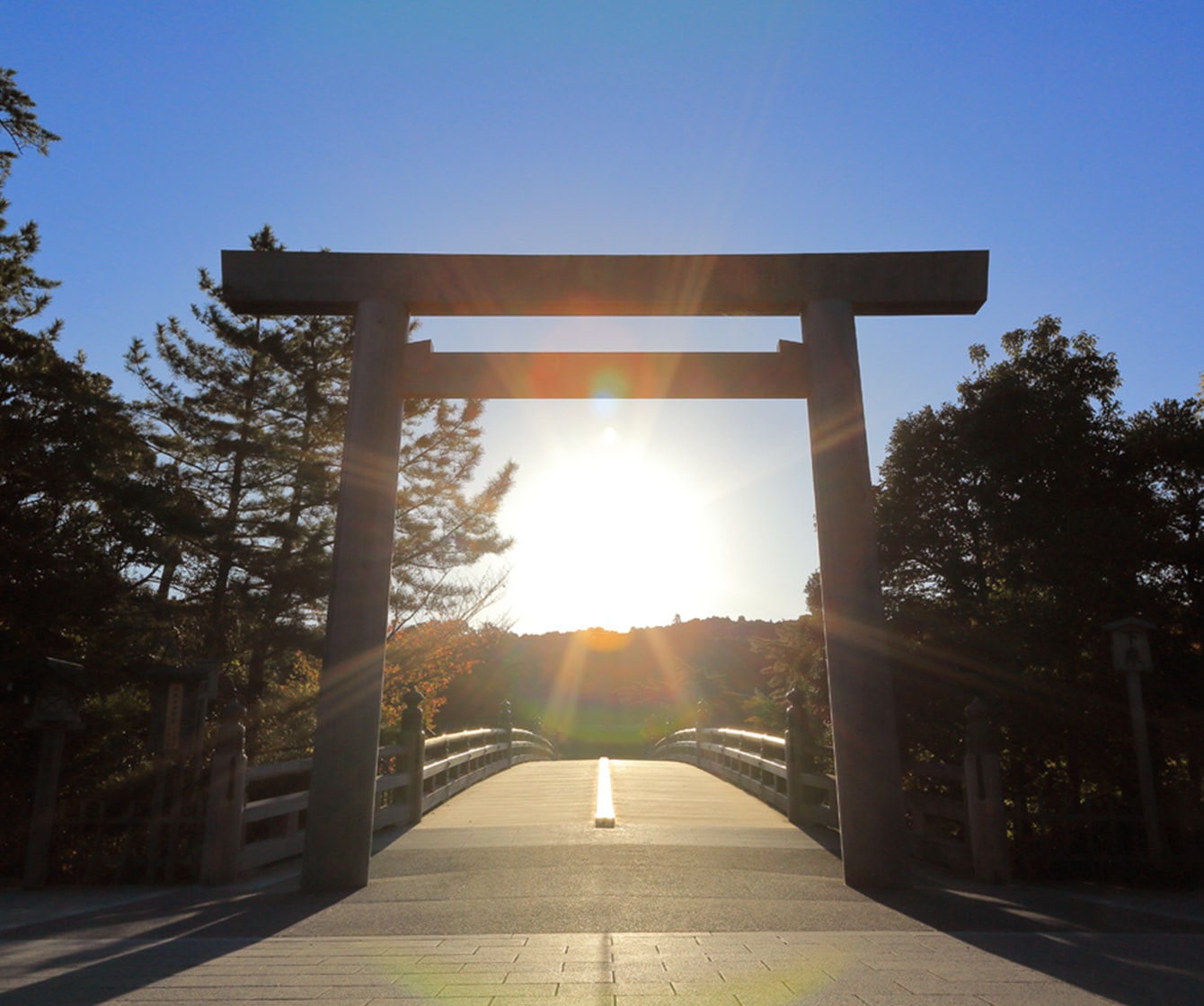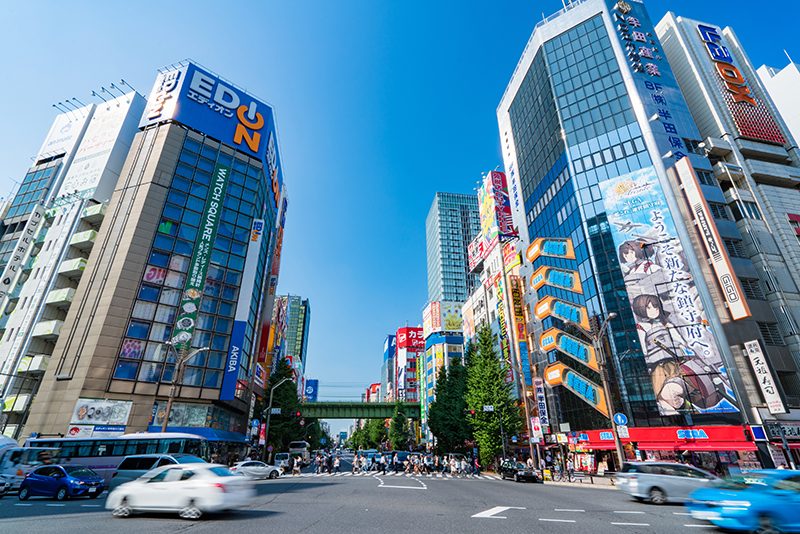1. Basic Knowledge of Ise Jingu (Ise Shrine)
Ise Jingu, commonly referred to as Ise Shrine, is a collective term for a complex of 125 shrines, centered around the Inner Shrine (Naikū or Kotai Jingu) and the Outer Shrine (Gekū or Toyouke Daijingu). The Inner Shrine is dedicated to the sun goddess, Amaterasu Omikami, while the Outer Shrine venerates Toyouke Omikami, the deity of agriculture and industry, overseeing essentials like food, clothing, and shelter.
Traditionally, pilgrims and visitors pay their respects in the order of the Outer Shrine followed by the Inner Shrine. Some also choose to visit prominent associated shrines, such as the Tsukiyomi-no-Miya and Yamatohime-no-Miya of the Inner Shrine, and the Tsukiyozu-no-Miya of the Outer Shrine.
Out of the 125 shrines, the Inner and Outer Shrines, along with 14 other closely related shrines, undergo a unique ritual called the Shikinen Sengu. This event involves rebuilding the shrine structures on an adjacent site and transferring the deities every 20 years. The 62nd Shikinen Sengu took place in 2013 and garnered significant attention as it coincided with the once-in-60-years Sengu of Izumo Taisha, another prominent shrine in Japan.
The vast expanse of Ise Shrine’s grounds occupies about a quarter of the entire city of Ise, showcasing its significance and grandeur.
2. Location and Access
Ise Shrine is situated in the city of Ise in Mie Prefecture. If you’re traveling by train or Shinkansen, aim for either the Kintetsu Ujiyamada Station or the JR Ise-shi Station.
Access to the Outer Shrine (Gekū)
- By Train It’s approximately a 5-minute walk from both the Kintetsu and JR Ise-shi stations.
- By Bus From both the Kintetsu and JR Ise-shi stations, you can take a bus that will get you to the Outer Shrine in about 5 minutes.
- By Car If you’re driving, it’s roughly a 6-minute drive from the Ise Interchange to the Gekū Mae parking area.
Access to the Inner Shrine (Naikū)
- By Train From the Kintetsu Isuzugawa Station, it’s about a 30-minute walk.
- By Bus A bus ride from the Kintetsu Isuzugawa Station will take around 6 minutes.
- By Car From the Ise-Nishi Interchange, it’s approximately a 5-minute drive to the municipal Uji parking area.
For those traveling from Nagoya, it takes about 1 hour and 20 minutes to reach Ise-shi Station from Kintetsu Nagoya Station, and approximately 1 hour and 40 minutes to Ujiyamada Station from JR Nagoya Station.
| Destination | Mode of Transportation | Starting Point | Duration |
|---|---|---|---|
| Outer Shrine (Gekū) | Train | Kintetsu & JR Ise-shi Station | 5 minutes (walk) |
| Bus | Kintetsu & JR Ise-shi Station | 5 minutes | |
| Car | Ise Interchange | 6 minutes | |
| Inner Shrine (Naikū) | Train | Kintetsu Isuzugawa Station | 30 minutes (walk) |
| Bus | Kintetsu Isuzugawa Station | 6 minutes | |
| Car | Ise-Nishi Interchange | 5 minutes | |
| From Nagoya | Train | Kintetsu Nagoya Station | 1 hour 20 minutes to Ise-shi Station |
| Train | JR Nagoya Station | 1 hour 40 minutes to Ujiyamada Station |
3. Recommended Spots
Ise Ninja Kingdom
Ise Ninja Kingdom (formerly known as Ise Azuchi Momoyama Castle Town) This is a magnificent and splendid castle town that replicates the luxurious Azuchi Castle built by Oda Nobunaga in its original size. At Ise Ninja Kingdom, visitors can immerse themselves in Japanese culture, experiencing theatrical performances, gourmet food, hot springs, contemporary swords, samurai, and ninjas. It’s a recommended spot where you can also try your hand at shuriken (throwing stars), archery, and blow darts.
Sarutahiko Shrine
Sarutahiko Shrine, also known as Sarutahiko Jinja, is a significant shrine located at the intersection leading to the Inner Shrine (Naikū) and Oharai Town (also known as Okage Yokocho). The shrine is dedicated to Sarutahiko Ōkami, a deity who is prominently mentioned in ancient Japanese texts such as the Kojiki and Nihon Shoki.
Sarutahiko Ōkami is renowned for guiding Ninigi-no-Mikoto, the grandson of the Sun Goddess Amaterasu, to the earthly realm. He is revered as the god of “Michi-hiraki,” which translates to “opening the way.” This deity is believed to guide beginnings and steer things in a positive direction. Moreover, Sarutahiko Ōkami is also recognized as the god of traffic safety. Many locals, upon purchasing a new vehicle, visit this shrine to receive blessings and prayers for their cars.
The lineage of the Uji Tsuchi family, who have been the chief priests of Sarutahiko Shrine from ancient times to the present day, traces back to Ōta no Mikoto. Ōta no Mikoto is the ancestor of the Uji Tsuchi family and a descendant of Sarutahiko Ōkami. Historically, when Yamatohime-no-Mikoto was searching for a place to enshrine Amaterasu, Ōta no Mikoto recommended the location near the upper reaches of the Isuzu River in Ise. This recommendation led to the establishment of the Ise Grand Shrine.
Devotees believe that Sarutahiko Shrine holds the power to fulfill various wishes, including traffic safety, business prosperity, household safety, construction safety, protection from misdirection and disasters, warding off evil, passing exams, first shrine visits for babies (Hundred Days Visit), Shichi-Go-San (a rite of passage for three and seven-year-old girls and three and five-year-old boys), safe childbirth, gratitude to the gods, realization of one’s heart’s desires, and more.
Please note that while the above information provides a comprehensive overview of Sarutahiko Shrine, it’s always a good idea to visit the shrine or its official website for more detailed and updated information.
4. Gourmet Delights
Haikarasan
Haikarasan This establishment exudes an ambiance reminiscent of Japan’s early Westernization period, with its unique Western-style architecture featuring ornate ceilings, bay windows, chandeliers, and wooden floors. The restaurant specializes in Western dishes that quickly became popular in Japan, such as curry rice, omurice, hayashi rice, and hamburg steak. The best part? Every item on the menu is reasonably priced around 1,000 yen.
Sushikyu
Sushikyu With a history tracing back to the Edo period during the Tenpō years, the first generation, Morita Kyuzo, initiated this sushi establishment. It later evolved into a ryokan (traditional Japanese inn) and even served as an imperial envoy’s lodging during its peak from the Meiji to early Shōwa period. The current building, renovated in 1989, retains its historical charm and incorporates zelkova wood from the Uji Bridge, which was bestowed upon them during the shrine’s relocation in 1869. A must-try dish here is “Tekone Sushi,” a local delicacy featuring thick slices of bonito marinated in a sweet and savory soy sauce, laid atop vinegar-seasoned rice made from locally produced Koshihikari rice. Prices range from 1,500 to 3,000 yen.
Matsusaka Beef & Iga Beef Yakiniku
Matsusaka Beef & Iga Beef Yakiniku Located within the Ise Ninja Kingdom, this yakiniku (grilled meat) restaurant offers a selection of premium meats, including the renowned Matsusaka beef and Iga beef. It’s the perfect spot to indulge in after exploring the attractions, with prices ranging from 3,500 to 6,000 yen.
Whether you’re a food enthusiast or just looking for a delightful meal, these gourmet spots in Ise promise an unforgettable culinary experience. Always consider checking their official websites or contacting them directly for the most updated information and reservations.
Conclusion
Ise Jingu, with its rich history and spiritual significance, is a must-visit for anyone intrigued by Japan’s cultural and religious heritage. From the serene ambiance of the shrine grounds to the bustling streets filled with gourmet delights and historical spots, Ise offers a unique blend of the ancient and the modern. Whether you’re seeking spiritual solace, historical insights, or simply a delightful culinary experience, Ise promises to leave an indelible mark on your heart. If you’ve ever felt a pull towards the mysteries of Ise Jingu, don’t hesitate. Embark on this journey and immerse yourself in the wonders that await.


コメント